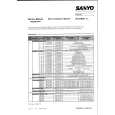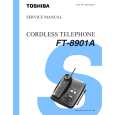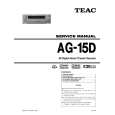|
|
|
Kategorie
|
|
Informacje
|
|
Polecamy
|
|
|
 |
|
|
Dla tego produktu nie napisano jeszcze recenzji!
 ;
jedyne do czego mogę mieć zastrzeżenie to jakość zdjęć zawartych w przesłanej instrukcji serwisowej ponieważ są fatalnej jakości, praktycznie nieczytelne. tak poza tym jestem zadowolony to jest to czego szukałem.
 ;
Wszystko w porządku.
Instrukcja czytelna i kompletna.
Dziękuję.
all right!
thank you.
 ;
Bardzo dobra instrukcja. Zawiera wszystko co potrzeba, polecam!
 ;
Instrukcja jest OK. Schematy czytelne, opisane niektóre procedury.
 ;
Instrukcja bardzo czytelna. zawiera co potrzeba. Polecam
The following is a simple adjustment method. � Simple Adjustment �
Note: Since exact adjustment cannot be performed, remember the positions of the controls before performing the adjustment. If the positions after the primary adjustment are only a little different, return the controls to the original position.
8. Connect the oscilloscope to TP (TRACKING-Y) and TP (VC) on the CD board. 9. Adjust RV704 so that the waveform is as shown in the figure below. (tracking gain adjustment)
VOLT/DIV: 1 V TIME/DIV:2 ms 0V
oscillosope (DC range) CD board TP (FOCUS-Y) TP (TRACKING-Y) TP (VC)
+ �
� Incorrect Examples (fundamental wave appears)
low tracking gain VOLT/DIV: 1 V TIME/DIV: 2ms 0V
Procedure: 1. Keep the set horizontal. If the set is not horizontal, this adjustment cannot be performed 2. 3. 4. 5. due to the gravity against the 2-axis device. Connect the oscilloscope TP (FOCUS-Y) and TP (VC) on the CD board. Insert the disc (YEDS-18) in and close the lid for CD. Put the set into test mode. (See page 30.) Press the ( button. From focus searching, focus is turned ON while entering CLV drawing-in mode. Tracking and sled are turned OFF. 6. Press the ( button. [Both tracking and sled are turned ON.] 7. Adjust RV702 so that the waveform is as shown in the figure below. (Focus gain adjustment)
VOLT/DIV: 100 mV TIME/DIV:2ms 100 mV 0V
high tracking gain high fandamental wave than for low gain VOLT/DIV: 1 V TIME/DIV: 2ms
0V
Note: VOLT/DIV: with the 10:1 probe in used.
10. Release test mode after adjustment is completed. � Inconnect Examples (DC level changes more than on adjusted waveform)
low focus gain VOLT/DIV: 100 mV TIME/DIV:2ms 250 mV 0V
Adjustment Location: CD board (See page 33.)
high focus gain VOLT/DIV: 100 mV TIME/DIV:2ms 100 mV 75 mV 0V
� 32 �
|
|
 |
> |
|









